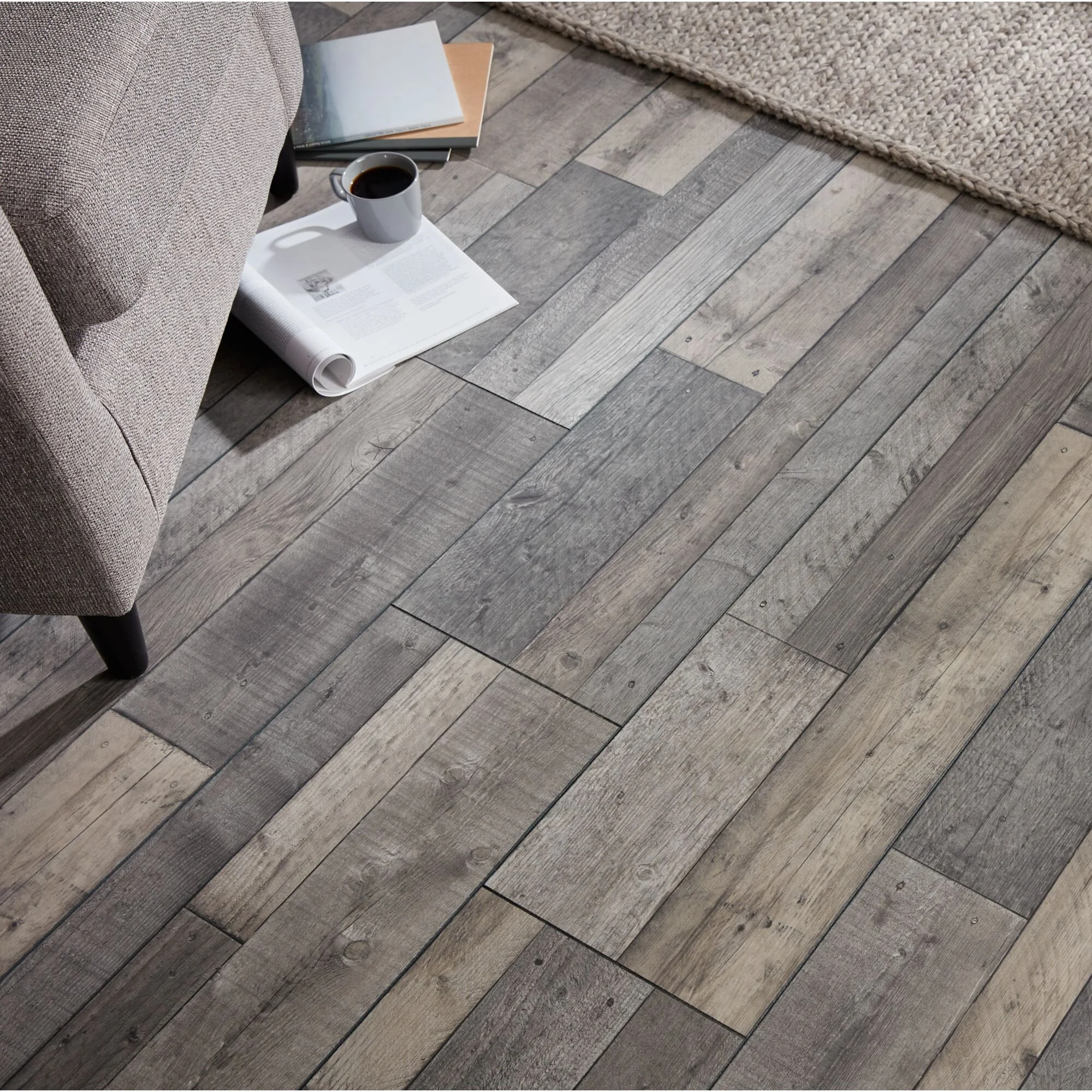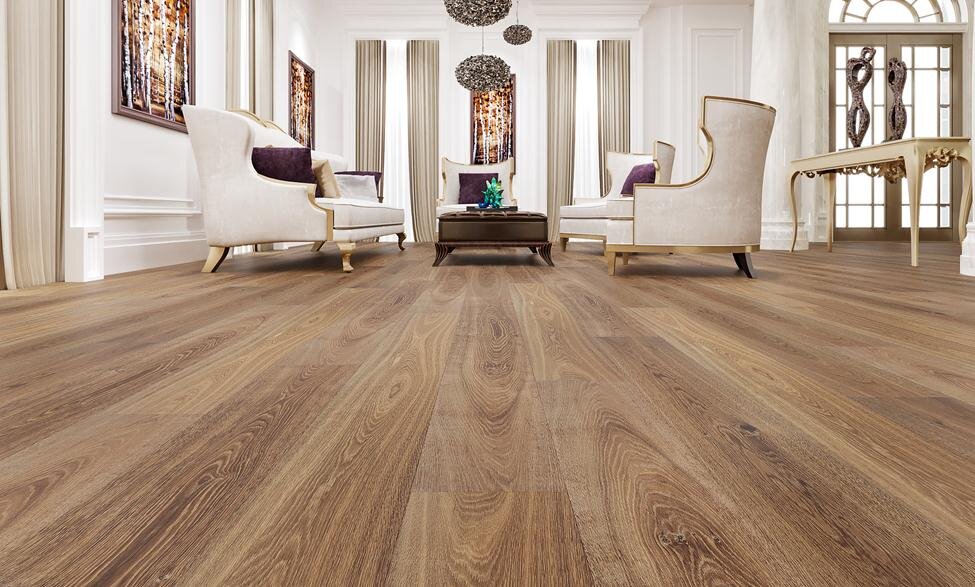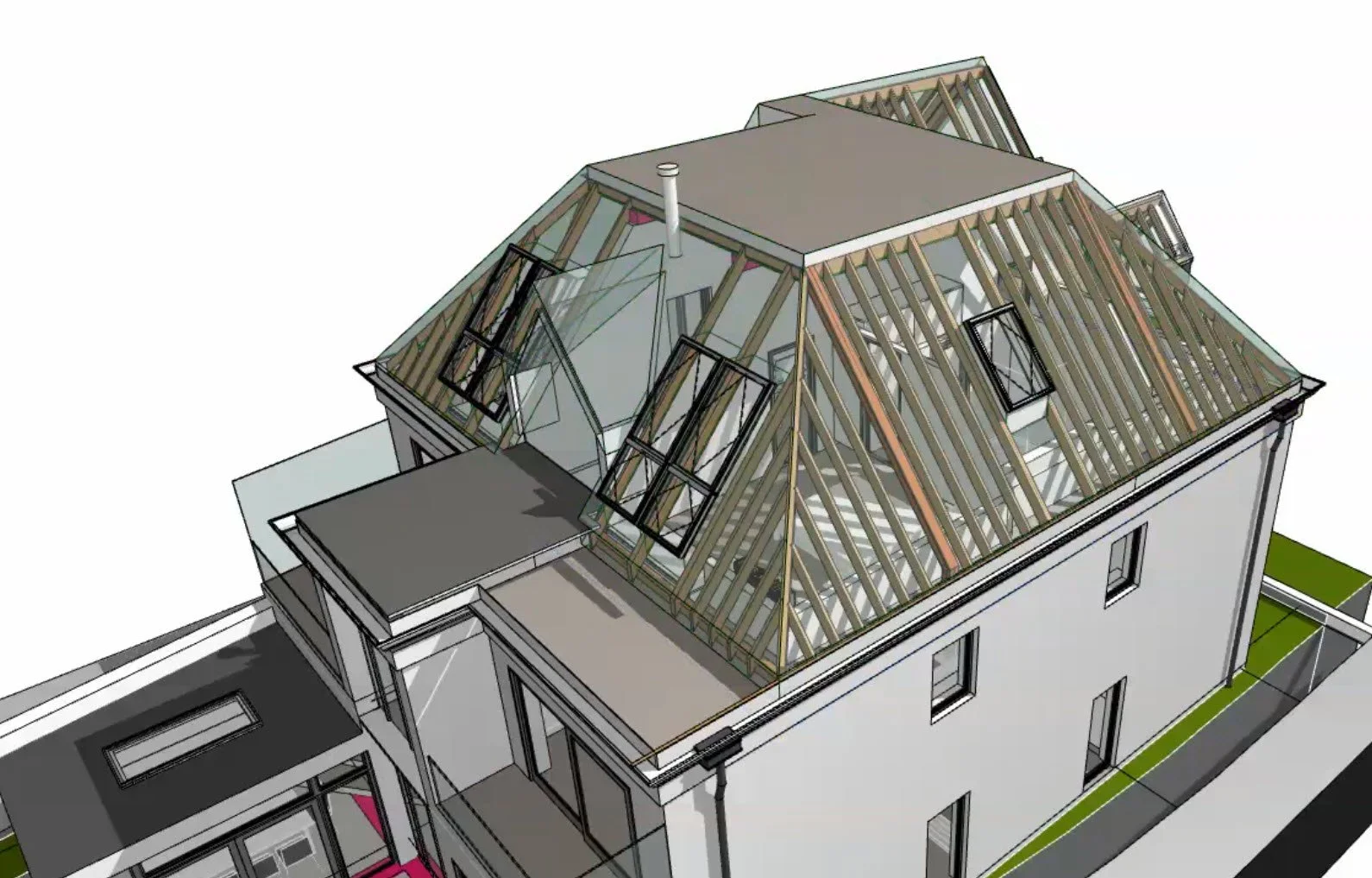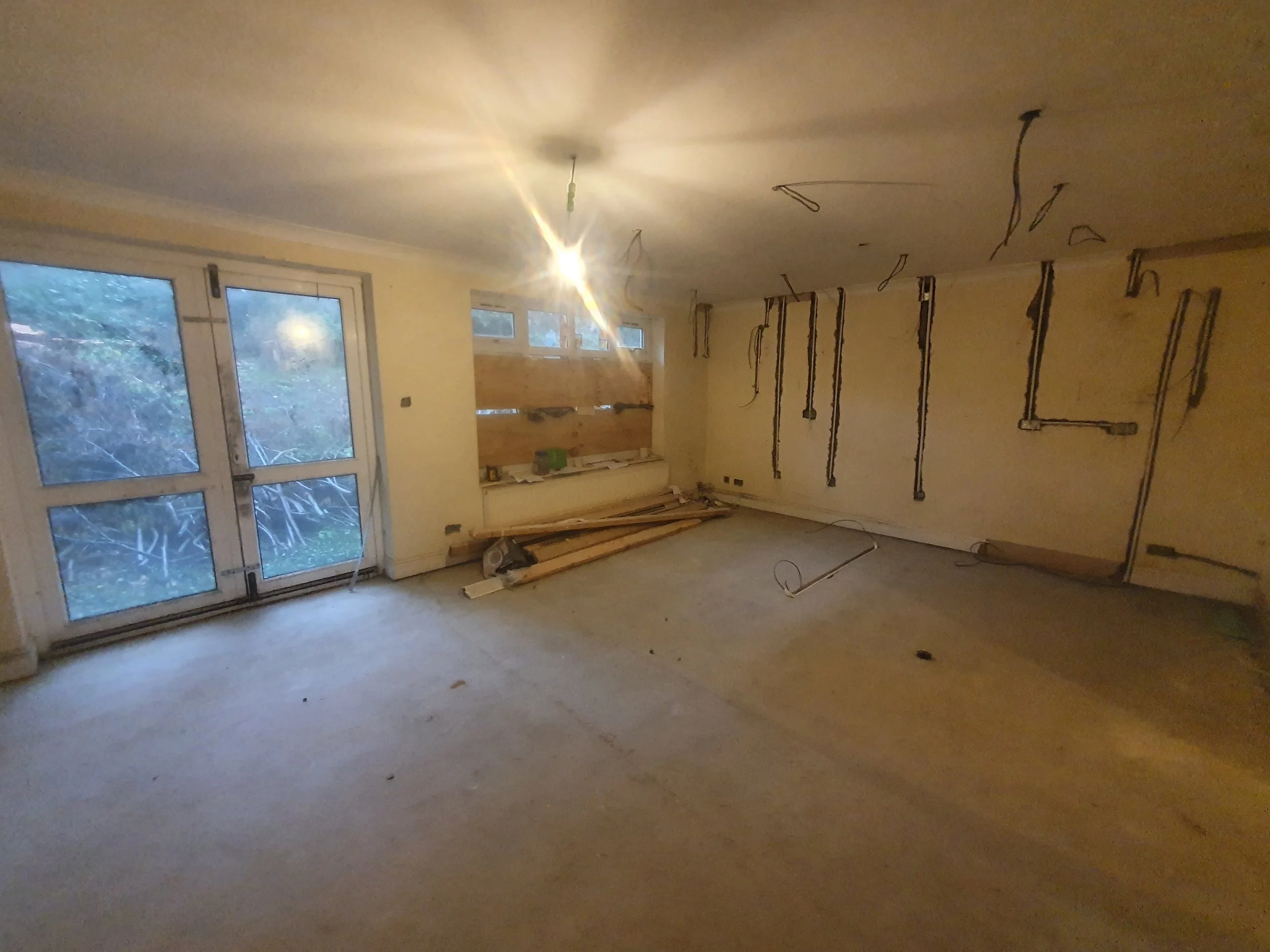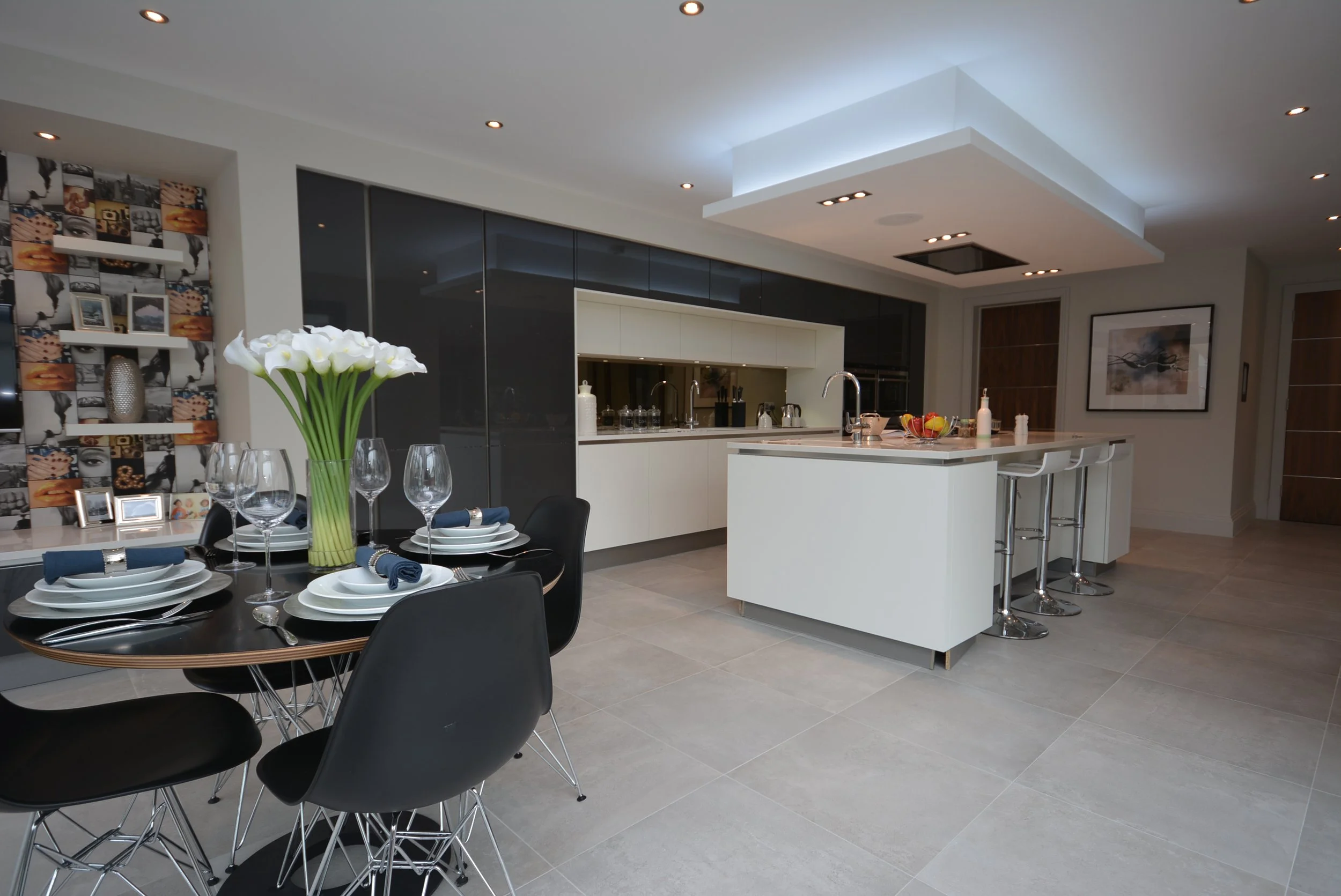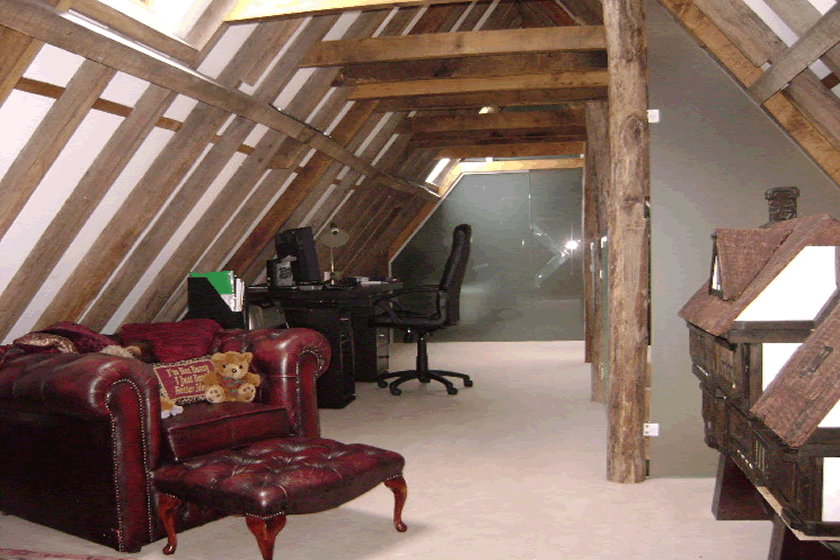6 BEST FLOORING OPTIONS FOR YOUR EXTENSION
There’s no home decorating challenge quite so frustrating as old, worn-out floors. You can paint the walls, add accessories, and even replace furniture on a budget, but replacing an entire floor is a much bigger – and costlier – job.
That doesn’t mean you just have to live with your ratty old carpeting or scuffed-up vinyl. These days, there are lots of different flooring options, including several that are very affordable.
And luckily there are plenty of options available. Such as...
Ceramic tile
Laminate
Hardwood
Vinyl
Cork
Carpet
So before you get started on your flooring project, it pays to do a little research on the different kinds of flooring and learn about their costs and benefits. Then, you can find a floor that fits both your space and your budget.
No one type of flooring is ideal for every room. For example, hardwood is consistently popular because of its warm, classic look, but it doesn’t hold up well to moisture or rough treatment. Here’s a look at the pros, cons, and costs of several popular types of flooring, as well as some ideas about where they can work best.
Want to know how much your project will cost?
CERAMIC TILE
Ceramic tile is made from a mixture of clay and shale that’s fired in a kiln like pottery. It’s a hard material that comes in a huge variety of colors, shapes, and patterns. We warn that not all ceramic tiles are tough enough for flooring, so it’s important to make sure the ones you buy are rated for use on floors.
Types
There are four main types of ceramic tile:
Glazed Ceramic. This type of tile has a glass-like coating that can give the tile virtually any color or texture. Glazed ceramic tile is practically maintenance-free.
Porcelain. This tile is fired at very high temperatures, making it extra-hard and durable. It’s available either glazed or unglazed. Both types are stain-resistant and work well in outdoor rooms.
Quarry Tile. This unglazed ceramic tile has a slightly rough texture, making it more slip-resistant than glazed tile. However, it’s not available in as wide a range of colors.
Terracotta. This unglazed tile comes only in earth tones. It’s less durable than other tiles and needs regular sealing to prevent stains.
PROS
Tile comes in many colors and shapes, so it can fit in with any style of home. Thanks to modern printing technology, it’s also possible to create ceramic tile with virtually any pattern. It can mimic the look of natural stone or even wood, though it won’t feel like wood underfoot.
For example porcelain tile to be the most durable type of flooring, resistant to scratches, dents, and moisture. It’s also very easy to clean. Glazed ceramic and porcelain tile require very little maintenance, though other types need more.
CONS
Tile feels cold and hard underfoot, and it makes footsteps sound louder. Glazed ceramic tile can also be slippery unless it’s coated with a special anti-slip finish.
Durability varies depending on the type of tile you choose. Terracotta tile requires regular sealing. Glazed tile is easy to clean and maintain, but the lines of grout between the tiles can stain if you don’t seal them regularly. And although tile is a durable material, it’s not that easy to fix if a single tile happens to crack.
Best Uses
Our experts say porcelain tile is the best choice for high-traffic areas, such as kitchens and mudrooms, as well as for wet rooms such as baths and laundry rooms. It’s also ideal for an enclosed porch or sunroom.
Laminate
Laminate flooring is constructed much like engineered wood, with a thin veneer over layers of plywood or compressed fiber. However, the top layer is not wood but a photograph under a clear plastic coating. That means laminate can look like wood, stone, tile, or just about any other material.
Types
Laminate comes in either planks or tiles. Most of them are floating floor systems, which you can install right over your old flooring with no glue or nails.
PROS
Laminate can mimic the look of wood or stone for much less money. It’s also easy to clean and requires very little maintenance. It’s a hard material that resists scratching and scuffing better than real wood.
Laminate is easy to install over an existing floor, saving you time and money on your flooring project.
CONS
Like tile, laminate can be slippery when wet. Also, if water stands on it for any length of time, it can get in between the layers of the material, causing the planks to warp. Unlike real wood, laminate can’t be refinished when it wears out, only replaced. That can make it a less cost-effective choice than wood or tile over the long term.
Best Uses
Laminate is a good material for high-traffic areas, such as kitchens, foyers, and playrooms. Our expert say it’s also a reasonable choice for basements as long as they have no problems with leaks or standing water. It’s best to avoid this material in wet rooms, such as bathrooms and laundry rooms.
Hardwood
When money isn’t an issue, hardwood flooring wins everytime. This household classic makes a wonderful addition to any kitchen, and has proven throughout the decades to be an irresistible classic. Unlike their laminated counterparts, hardwood floors can be easily repaired and last a lifetime. Because of this, having them installed can see a boost to your house price.
Types
Solid wood flooring comes in either strips. It can be made from many kinds of wood, from domestic species such as oak and maple to exotic varieties such as Brazilian cherry or purpleheart.
Wood flooring can be sold either finished or unfinished. If you choose unfinished flooring, you will need to sand and finish it after installing it.
Wood is a renewable resource, but it isn’t always harvested in sustainable ways. Cutting trees without planting new ones in their place, or cutting them faster than new ones can grow, contributes to global warming.
PROS
People love solid wood flooring because it looks great in any style of home with any decor. It’s also very long-lasting since it can be refinished up to five times to remove surface scratches. Experts say adding hardwood floors can increase the resale value of your home as well.
CONS
The biggest downside of hardwood floors is that they don’t stand up well to rough handling. They can warp if they’re exposed to moisture for a long time, making them a bad choice for bathrooms or laundry rooms. They can shrink and swell due to changes in temperature, and they’re vulnerable to scratches and dents.
Best Uses
Wood flooring is best for spaces that don’t get lots of traffic, such as living rooms, halls, and bedrooms. Our experts recommend it as the overall best choice for living rooms, dining rooms, and family rooms.
Vinyl
Vinyl is a type of resilient flooring, a flexible material that feels a bit softer underfoot than rigid wood or tile. It’s made from a layer of PVC plastic over a layer of felt. Cushioned vinyl has a thin layer of foam as well, making it more comfortable to walk on. Thicker vinyl flooring can have a textured surface to make it look like wood or stone.
Types
Vinyl flooring comes in several forms. Sheet vinyl is a large sheet of flooring that you unroll, cut to size, and glue to your subfloor. You can also buy click-style vinyl planks, similar to engineered wood or vinyl tiles, that you glue in place one at a time. Some vinyl tiles come with a peel-and-stick backing, so you don’t need to add any adhesive before laying them down.
PROS
Vinyl is a tough material that stands up to both moisture and heavy traffic. It’s comfortable to walk on and warmer on bare feet than tile. It’s also inexpensive and durable.
Like tile, vinyl comes in a wide range of colors and patterns. It can convincingly simulate the look of almost any other material.
CONS
Vinyl flooring varies in quality. You’ll have less choice of color and pattern with cheaper types, and they often have a fake look. Also, if you install it directly over a subfloor with no underlayer, it can have a hollow, echoey sound when you walk on it.
One of the biggest complaints about vinyl is that it’s not eco-friendly.
Best Uses
Vinyl is appropriate for kitchens, baths, and other wet rooms. It’s also suitable for rooms that get a lot of traffic, such as mudrooms. We recommend it as the best choice for a basement since it can tolerate moisture and doesn’t feel as cold as tile.
Cork
Another type of resilient flooring is made from cork, the bark of a particular type of tree. You can harvest this bark every eight to 10 years without killing the tree, making cork a sustainable material. The bark is boiled, ground up, compressed into sheets with a resin binder, and baked in a kiln. Some types of cork flooring have a veneer of natural cork bark over a backing of either compressed cork or high-density fiberboard.
Types
Cork flooring comes in two forms. You can buy tiles that you glue down to install or planks that typically have a click-lock edge and can be installed as a floating floor.
PROS
Like other resilient flooring, cork is warm, quiet, and soft underfoot. It has a natural look and is slip-resistant. It’s also an eco-friendly choice made from renewable resources and produced in a way that creates next to no waste. Both cork tiles and click-lock planks are easy to install yourself.
CONS
Cork is vulnerable to moisture, tears, and dents. Although most cork flooring comes prefinished, it still needs to be resealed every year with wax or polyurethane to protect it from stains and water damage.
Best Uses
Cork can work in bedrooms, kitchens, playrooms, and living areas. It’s not suitable for wet rooms such as bathrooms or high-traffic areas such as mudrooms.
Carpet
Wall-to-wall carpet is a perennial favorite for bedrooms and living areas. It’s made by pulling soft fibers, such as wool or nylon, through a woven backing, then gluing on more layers of backing to strengthen the material. You install it by nailing it down over a layer of padding, which adds cushioning and prolongs the life of the carpet.
Types
Carpet comes in a wide variety of colors, textures, and materials. It can be made from:
Wool, a durable material that naturally resists moisture and stains
Nylon, a strong, wear-resistant synthetic material that lasts a long time and can be recycled at the end of its life
Acrylic, a synthetic material that’s resistant to mildew, crushing, and insect damage
Polyester, a moisture-resistant synthetic fiber that can be dyed to produce bright colors but is vulnerable to staining
Polypropylene, a plastic highly resistant to moisture, mildew, and stains, which can be used both indoors and outdoors
PROS
Many people like carpet because it feels soft and warm underfoot. It’s also quiet, slip-resistant, and fairly easy to install.
CONS
Carpeting is more difficult to clean than hard flooring. Even with regular vacuuming, it can still harbor dirt that only steam cleaning can remove. It’s also vulnerable to staining. The soft fibers of a carpet can harbor allergens such as pollen and pet dander, making it a bad choice if anyone in your home suffers from allergies.
Best Uses
Carpet is most appropriate for areas such as bedrooms and living rooms, where less dirt gets tracked in and nothing is likely to be spilled on it. Polypropylene carpets can also work in outdoor spaces such as enclosed porches.



